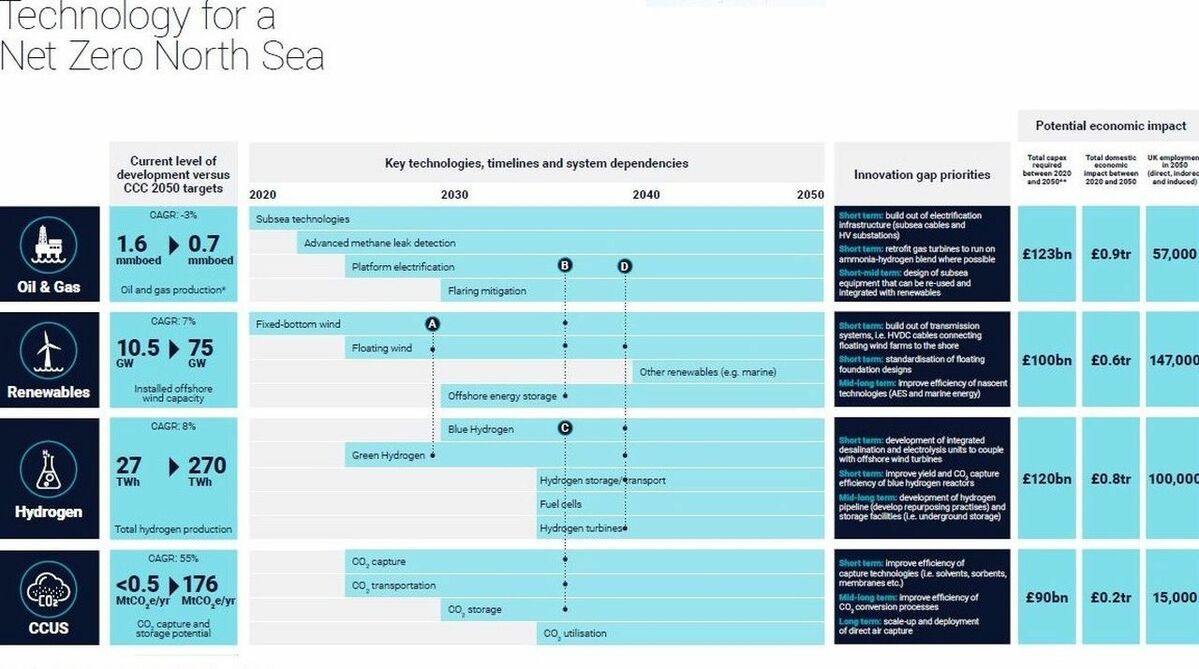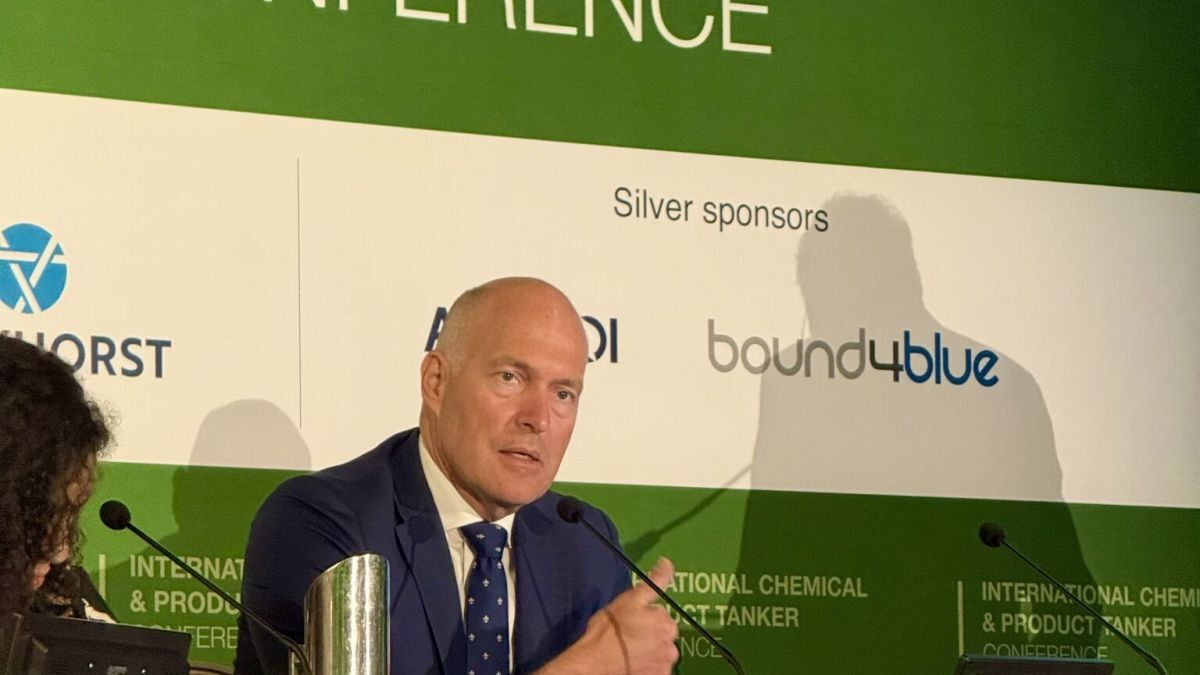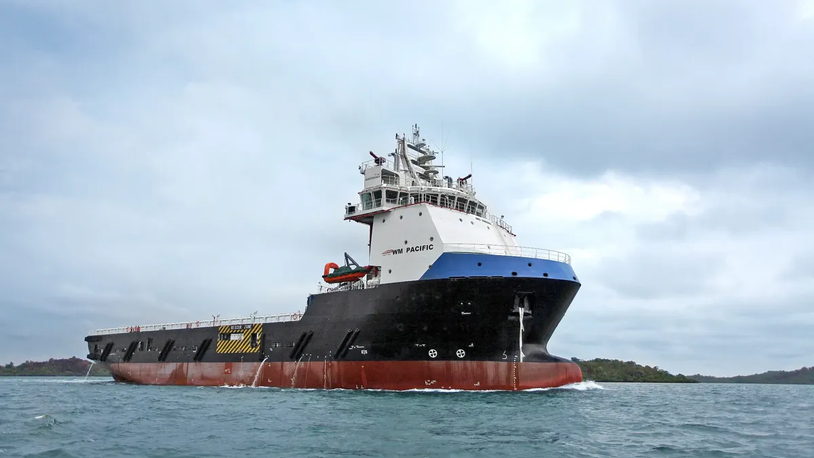Business Sectors
Events
Contents
Report sets out roadmap to integrated energy future for North Sea
The Oil & Gas Technology Centre (OGTC) in the UK has released a comprehensive roadmap setting out critical technology needed to deliver an integrated net-zero energy system on the UK Continental Shelf (UKCS), highlighting the major economic opportunity this transformation offers
Closing the Gap: Technology for a Net Zero North Sea, produced by global natural resources consultancy Wood Mackenzie for the OGTC, with support from Chrysaor and the Scottish Government, sets out a technology roadmap for an integrated energy future in the North Sea.
The report outlines how accelerating the development of new energy technologies can dramatically reduce emissions, and how adopting new technologies will harness the full potential of the UK’s world-class natural resources from renewable power sources and oil and gas, to hydrogen and long-term carbon storage. Offshore wind and floating wind energy has a key role at the heart of this vision.
Maximising the opportunities to innovate across the renewable and fossil fuel sectors could create more than 200,000 new jobs across the UK and contribute more than £2.5Trn (US$3.2Trn) to the nation’s economy by 2050. It would also create a diversified energy sector, support a new generation of highly skilled jobs and open up exciting export potential.
The report said the oil and gas sector, including its workforce, supply chain and infrastructure, can enable and accelerate the growth of the renewables sector, while renewable energy sources will be critical in supporting the oil and gas industry on its journey to net zero.
Realising this integrated vision will require £430Bn of new investment to close the gap on a number of crucial technologies and accelerate their deployment. These include: oil and gas platform electrification, methane leak detection and flaring mitigation; larger blades, taller towers and automated inspection technology for fixed offshore wind; optimised and standardised floating offshore wind foundation designs; innovative hydrogen membranes and CO2 sorbents to improve blue hydrogen yield; saltwater electrolysis technology to reduce the cost of green hydrogen production; advanced catalyst materials for hydrogen fuel cells to reduce costs and improve durability; new solvents, sorbents, membranes and conversion solutions to reduce the cost of CCS; and power take-off solutions and support systems for marine renewables such as floating solar.
OGTC chief executive Colette Cohen OBE said, “Reimagining the North Sea as an integrated energy system is essential for the UK and Scotland to achieve their net-zero ambitions. But we need to invest now to close the gap on the key technologies needed to make this ambition a reality.
“We need to digitalise our offshore energy sector and solve big challenges like energy storage, infrastructure redeployment, transmission systems and cost-competitive floating wind structures. By doing this, we can create strategic advantage and valuable export opportunities.
“With its decades of energy expertise, the UK has a huge opportunity to become a leading manufacturer, designer, installer and operator of net-zero energy systems.
“Leveraging our strength in oil and gas, we can also partner with the renewables sector to accelerate the delivery of the next generation of energy in the UK – and internationally. This is where governments and industry should focus investment at pace in the coming years.”
Wood Mackenzie vice president, upstream consulting Malcolm Forbes-Cable said, “The North Sea is at the heart of the UK economy. This will not change, but our energy eco-system will.
“This report underlines how the UKCS can be redeveloped into a decarbonised, integrated energy system; one that can optimise the offshore sector’s economic value and deliver a secure supply of affordable energy.
“Hydrogen, for example, can be used in place of gas to heat homes and power engines and industrial processes, while reducing our carbon footprint. The Committee on Climate Change has set significant targets for a low-carbon hydrogen economy in the UK, but production remains close to non-existent. There are key technology challenges to overcome before hydrogen can be deployed on a vast scale.”
Related to this Story
Events
Maritime Environmental Protection Webinar Week
Cyber & Vessel Security Webinar Week
The illusion of safety: what we're getting wrong about crews, tech, and fatigue
Responsible Ship Recycling Forum 2025
© 2024 Riviera Maritime Media Ltd.














